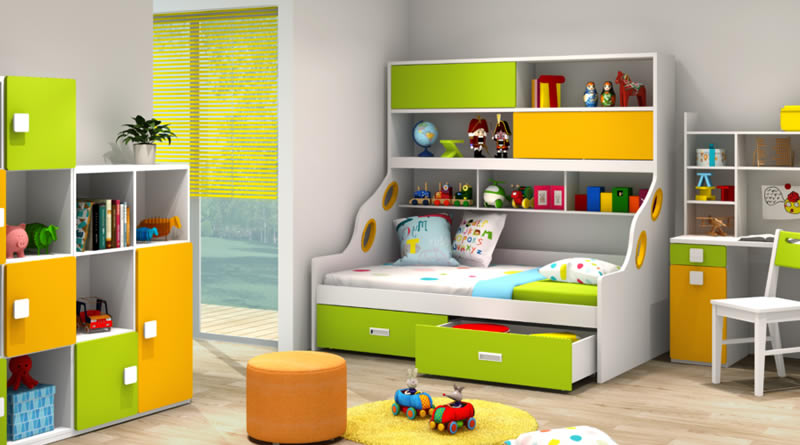Choosing Safe and Durable Furniture for Children
When it comes to furnishing spaces for children, whether it’s their bedroom, playroom, or study area, safety and durability are of utmost importance. Selecting furniture that is not only visually appealing but also designed to meet the unique needs of children is crucial. In this article, we will explore the key considerations for choosing safe and durable furniture for children, providing you with valuable insights to make informed decisions.
Prioritizing Safety
Safety should be the top priority when selecting furniture for children. Look for pieces that meet industry safety standards and have undergone rigorous testing for durability and stability. Ensure that the furniture is free from sharp edges or corners that could cause injuries. Check for non-toxic finishes and materials, as children often come into contact with furniture surfaces. Additionally, consider furniture with built-in safety features such as anti-tip mechanisms on dressers and cabinets to prevent accidents.
Opting for Sturdy Construction
Children are naturally active and curious, often putting furniture to the test. Choosing furniture with sturdy construction is essential to withstand their energetic play and movements. Look for solid wood or metal frames, reinforced joints, and high-quality hardware. Avoid furniture made from flimsy materials that may easily break or collapse under the weight or pressure of active children. Investing in durable furniture ensures longevity and minimizes the need for frequent replacements.
Considering Size and Scale
Proportion is crucial when selecting furniture for children. Ensure that the size and scale of the furniture are appropriate for their age and height. For example, chairs and tables should be ergonomically designed, allowing children to comfortably sit and reach the surface. Pay attention to the height of beds and bunk beds, ensuring that they have appropriate safety rails and ladders. Furniture that is designed with children’s dimensions in mind promotes comfort and reduces the risk of accidents.
Choosing Easy-to-Clean Materials
Children are prone to spills, stains, and messes, so it’s important to choose furniture with easy-to-clean materials. Opt for upholstery fabrics that are stain-resistant and can be easily wiped clean. Look for furniture with removable and washable cushion covers, making it easier to maintain cleanliness and hygiene. Furniture that is resistant to wear and tear and can withstand frequent cleaning ensures that it remains in good condition for longer.
Incorporating Age-Appropriate Design
Consider the age and developmental stage of your child when selecting furniture. Younger children may benefit from furniture with rounded edges and softer materials to prevent injuries. Older children may have specific needs, such as desks with adequate storage and ergonomic chairs for studying. By incorporating age-appropriate design elements, you can create a space that supports their growth, learning, and independence.
By prioritizing safety, opting for sturdy construction, considering size and scale, choosing easy-to-clean materials, and incorporating age-appropriate design, you can make informed decisions when selecting furniture for children. Remember to look for furniture that meets safety standards, invest in durable pieces, and consider the specific needs and preferences of your child. Creating a safe and comfortable environment with well-chosen furniture contributes to their overall well-being and enjoyment of their space.




